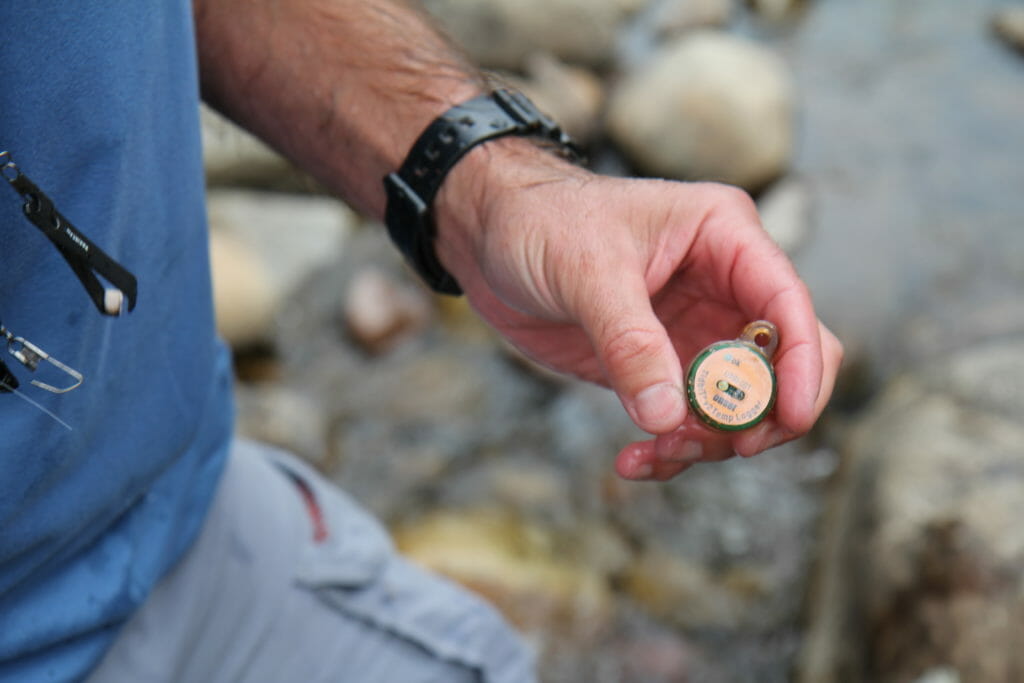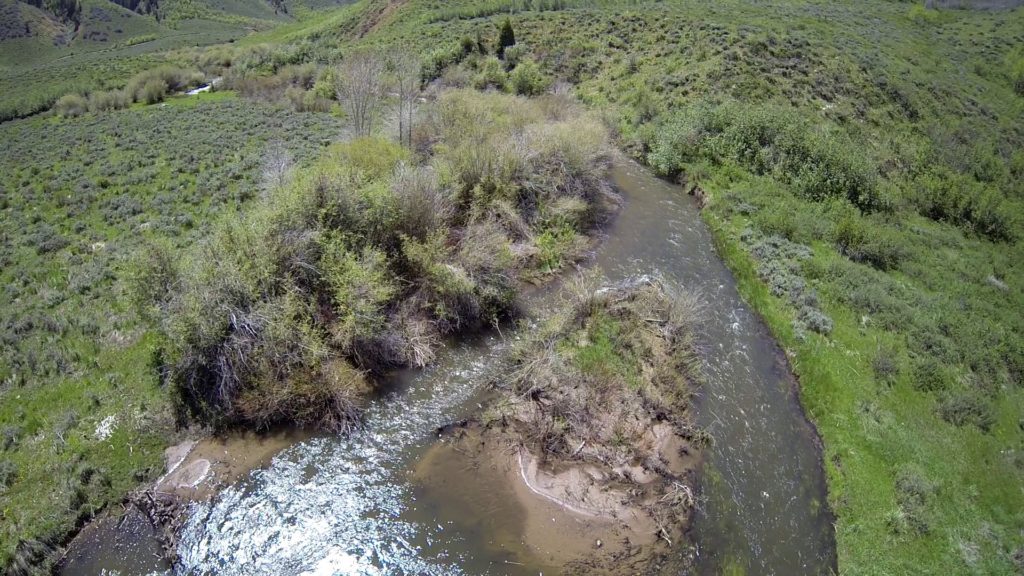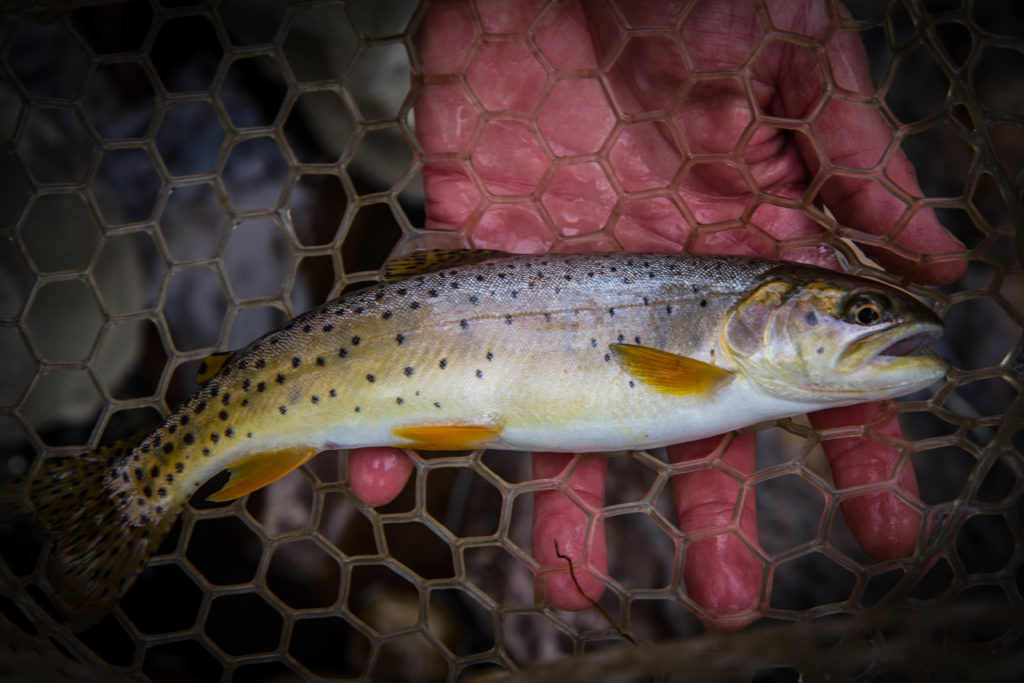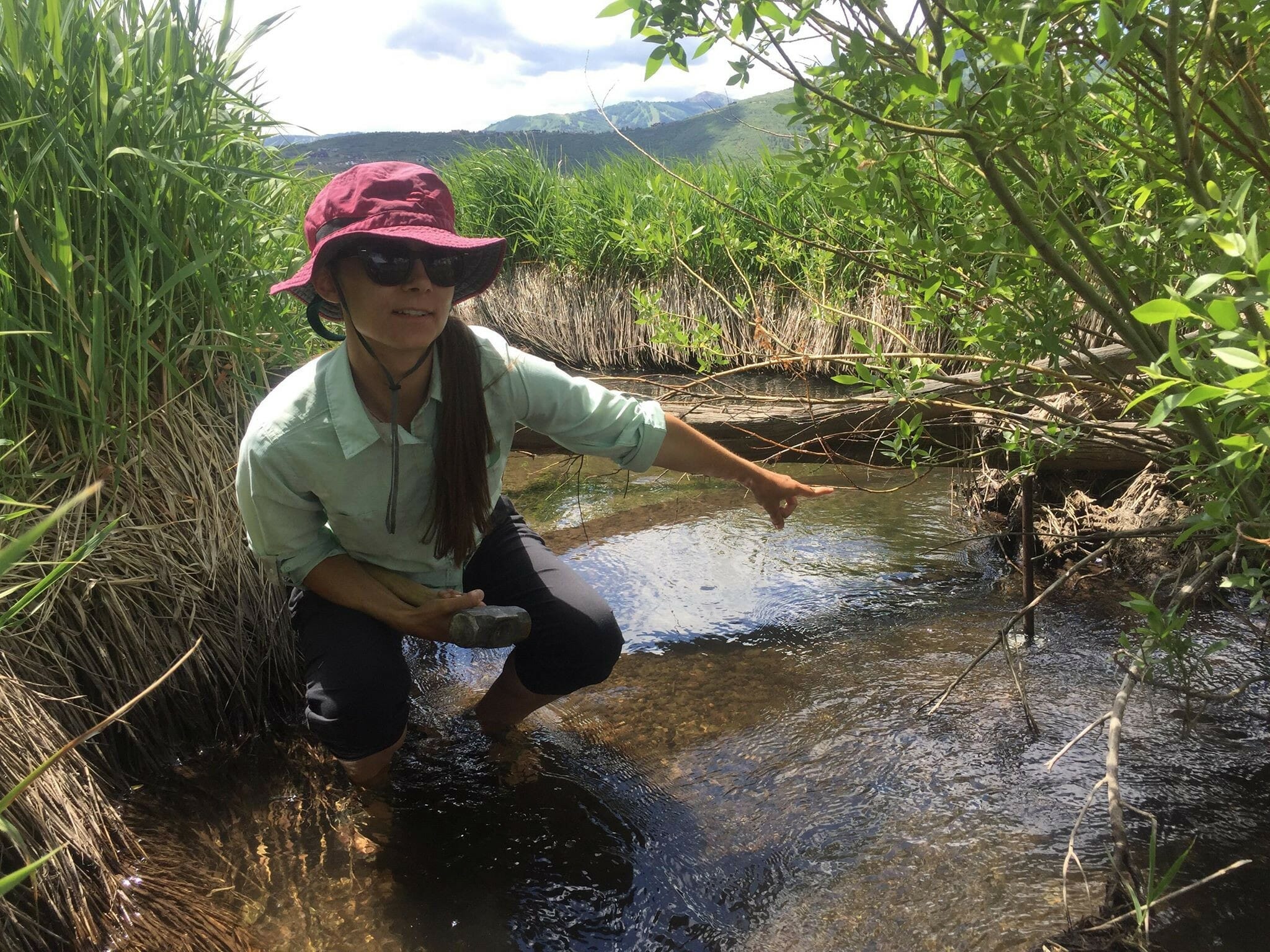By Paul Burnett
Trout Unlimited members often ask about opportunities to engage with active and ongoing conservation projects.
Grassroots-based programs like willow planting and Trout in the Classroom are great ways to contribute, but are also seasonal in nature and volunteering to help with fish sampling efforts can be hit or miss.
Many of our restoration projects involve high-level engineering work and construction, at least in most cases, should be handled by experienced contractors.
But there is a way for members and chapters to engage in important data collection on coldwater streams across the country.
Measuring water temperature is a vital component to determining where, and if, we should focus our conservation work. If rivers, streams and creeks are too warm to support trout and other native species we need to focus on correcting that issue before working on habitat.
One of the most valuable forms of data collection chapters can engage in involves deploying temperature loggers which continuously measure water temperature as long as they are in place, typically May-October.
Temperature data loggers record data at predetermined intervals providing invaluable information about the conditions at each fishery.
For example, water temperatures might be a warm 68 degrees on the day you go out and fish and take a thermometer reading. That one temperature measurement alone tells only part of the story. The more important questions are how long temperatures stay above certain thresholds, and do water temperatures cool sufficiently during the night and early morning hours to allow the coldwater fish to survive?
This video animation shows how stream temperatures changed hourly and were unsuitable for coldwater fish throughout much of the summer of 2018 on East Canyon Creek in Utah. East Canyon Creek flows from the bottom to top of the map.”
Larger questions about interconnectedness of stream habitats can be answered, helping us understand how temperatures in each reach affect downstream reaches, and also how upstream reaches affect the study reach.
These data loggers can also tell us if are there thermal refugia and coldwater tributaries that allow fish in a larger reach to survive hot periods. If a barrier blocks fish from moving into thermal refugia, then understanding these relationships helps us prioritize barrier removal projects.

Water temperature is also an indicator of broader issues within a watershed. In largely diverted river systems water temperatures can be correlated with stream flows and can be used to determine instream flow targets.
Stream reaches with degraded riparian habitat may show rapid warming from cold headwaters, allowing us to prioritize revegetation efforts.
A series of loggers placed in the stream at intervals can provide a spatial representation of thermal inputs, which can help improve our focus on areas where we need to concentrate conservation efforts. These broader questions can be effectively answered when we deploy a network of temperature loggers.
If your chapter is interested in engaging in a temperature monitoring study I encourage you to reach out to your local Trout Unlimited staffer or wildlife agency. There are always places within your home river or tributaries with missing data, and even if your chapter or partners have completed a temperature study in previous years, every year is different, and it is always helpful to collect additional data.
Individual temperature loggers usually cost around $70 each. Measurement of water temperatures is most effective when it is done along the length of a stream or within a stream network. The most effective temperature studies include 8-10 loggers deployed every 1-3 miles or where tributaries and major water withdrawals occur. These longitudinal studies paint a dynamic picture of stream reaches that support coldwater refuge areas and warm water inputs.
These studies are also useful for the development of regional stream temperature models such as norWest These models, based on the actual field data, provide the backbone for climate change assessments that help us understand the risks climate change poses for specific fish populations and allows us to prioritize projects.
East Canyon Creek Case Study
In northern Utah’s East Canyon Creek, with headwaters in Park City, Trout Unlimited has been engaged for more than 15 years in an extensive effort to improve the water quality to make habitat suitable for this historically popular coldwater fishery. It formerly held native cutthroat trout, but as Park City has grown, increasing water use in the headwaters has greatly-reduced summer base flows.

During extreme dry years, flows become critically low and, as a result, stream temperatures warm. We wanted to document this phenomenon in 2018, which ended up being one of the hottest and driest years on record. In 2018 we deployed eight temperature loggers spaced 1-2 miles apart on the mainstem of East Canyon Creek. We were able to document the worst of conditions for trout in East Canyon Creek. In fact, conditions were so bad that one water company, the Mountain Regional Special Service District, augmented stream flows.
The collaborative effort to ensure East Canyon Creek did not dewater in 2018 was a commendable effort bringing diverse stakeholders together. But even with the flow augmentation, stream temperatures were way too warm to support trout throughout much of the summer — temperatures exceeded 82 degrees F. on the hottest days. When coupled with barriers to fish movement that prevent fish from moving upstream into potential coldwater refuge areas, the picture is dire.
This brings up the question we are frequently asked by water users and agricultural producers, “How much water do you need?” Often our lowest bar of success is measured by keeping the channel wet. However, the 2018 data clearly shows more water than that is needed if we wish to sustain our coldwater fisheries. In an effort to answer this question in East Canyon Creek, we’ll be conducting the same study in 2019, which is shaping up to be a good water year that should produce sustained flows. Relating the stream temperatures to flow is critical to helping us more effectively answer the question.
A Worthy Effort
If your chapter is looking to engage in conservation in a different way than you have historically, then consider purchasing some temperature loggers and start collecting this valuable data. We typically use temperature loggers produced by Onset Computer Corporation. The most effective temperature logger we have used is the pendant 64k logger which collects high quality data and has a replaceable battery. In order to launch the loggers, you need a USB shuttle and app, but many agencies and TU staff have access to these. The loggers are waterproof, but I like to protect them in a compartment made out of PVC. I prefer to install them in the stream using metal concrete form stakes and wrapping the compartment with zip ties. Check the logger weekly or monthly to ensure it is still submerged in the water.
The temperature logger we have used most commonly is the pendant 64k which collects high quality data and has a replaceable battery. In order to launch these loggers, you need a USB shuttle, but newer models are also Bluetooth enabled so don’t require the shuttle, and they can also log information on stream intermittency. Visit the Trout Unlimited national website for more details on data loggers and our Stream Temperature Monitoring Handbook.

This is a worthy endeavor for chapters to invest in, and helps TU and our partnering agencies in prioritizing future conservation efforts. Another way to work as a citizen scientist is by downloading the Rivers app helping TU identify areas of concern and potential conservation projects.
Paul Burnett is the Utah Water and Habitat Program Lead for Trout Unlimited. He is based in Ogden and has led TU’s efforts on the Weber River drainage.



